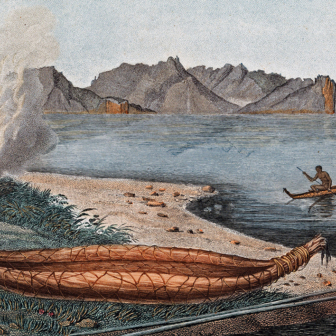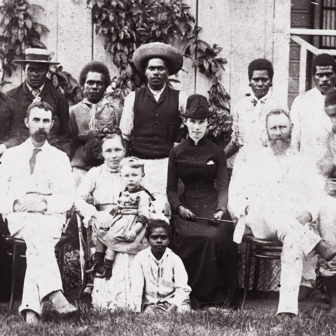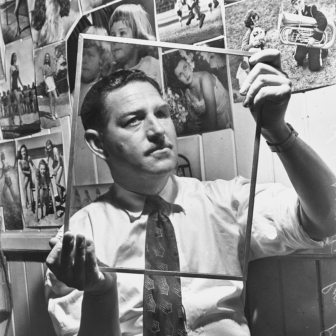“No one was interested in these books except my readers,” says Marie Force whenever she is asked why she decided to self-publish her contemporary romance novels. The first, Line of Scrimmage, was released in 2008. In the decade-and-a-half since then, she has published dozens more, sold millions of copies and become a regular on that old yardstick of English-language publishing success, the New York Times bestseller list.
She is an “indie phenomenon,” according to Christine Larson in Love in the Time of Self-Publishing, a scholarly analysis of the community of writers, readers and other fans that Force’s career exemplifies. Known inside and out as “Romancelandia,” this community has been a pioneer and standout success in the era of digital publishing, says Larson, generating new stories, writers, books, readers and money.
Larson is especially interested in the ethos and methods that romance writers developed in the predigital world. Their ways of writing stories, improving their skills and supporting each other, she argues, adapted brilliantly to electronic publishing, marketing and distribution and the gig economy.
Larson’s research focuses mainly on the United States and the membership organisation there, Romance Writers of America. But the boom in romance fiction has been much wider. In Australia between 2019 and 2023, measured sales of the genre more than trebled, from $18 million to $63 million, according to Books From Australia. Australia has its own RWA too, Romance Writers of Australia, a membership organisation founded in 1991.
The highest-selling author by value in any genre in Australia in 2022 and 2023 was Colleen Hoover, an American author of romance and young adult fiction. She had four titles in the top ten in 2022, including the No 1 seller It Ends With Us, and sold 878,000 books worth $13.4 million in 2023. In 2024, four of the top ten selling titles were romance fiction, led by a new film-tie-in edition of It Ends with Us.
The boom has been going even longer, depending on what counts as romance, who is counting and where. Georgette Heyer published a “Regency” or other romance almost every year from the 1920s to the 1960s (and often a detective story as well). Literary reviewers ignored them but they usually sold hundreds of thousands of copies in paperback after large print runs in hardback. Many are still in print, reliably providing, for the Guardian’s Rachel Cooke, “just about the best fun it is possible to have between soft covers.”
Mills & Boon’s reputation as a supplier of “wholesome romantic fiction” to Britain’s circulating libraries was set by the time the Second World War broke out. In the 1950s it began cross-publishing titles with Harlequin in Canada. The two companies merged in 1971 and were selling “in the region of 250 million books worldwide” by the mid 1980s, according to the publisher’s website. Conventional bestseller lists don’t capture the scale of Mills & Boon’s unusual subscription-plus-limited-retail business model: News Corporation noticed and added Harlequin to the HarperCollins stable in 2014.
In Larson’s analysis, the really big boom came in the early 2010s, “The Time of Self-Publishing,” when three events turned major publishers’ “vague curiosity” about indie romance authors into serious commercial interest. St Martin’s Press signed a $2 million, four-book deal in 2011 with Amanda Hocking, who had posted online “a few unpublished, paranormal, young adult manuscripts” the previous year. E.L. James’ Fifty Shades of Grey trilogy, which had started life as a fan fiction series, e-book and print-on-demand title, was picked up and re-released under the Vintage imprint. Nearly three million physical copies were sold in Australia in 2012 alone, and a further 750,000 as ebooks, according to the publisher, (now) Penguin Random House. A decade later, more than 100 million copies have been sold worldwide. Finally, in 2014, book distributor Ingram began distributing indie author Barbara Freethy’s self-published romance novels to bookstores without the involvement of a traditional publisher.
To mainstream publishers, big books were not unusual. Less familiar were Romancelandia’s distinctive features. Larson says there has long been an unusual depth of connection between the readers and authors of romance fiction, generating a distinctive kind of fandom. Reading romance was often a communal activity, not a solitary engagement of the kind revered in literary imagination.
Writing romance, too, was cooperative. The network of romance writers fostered by Romance Writers of America was “radically open,” with information about deals, fees, costs, people and relationships shared much more openly than by established authors in the secretive publishing world. (So close was the level of co-operation among RWA members that it attracted the attention of the competition regulator.)
Especially unusual was the “open-elite” structure of the network. Successful, published authors and unpublished aspirants shared information, “creating upward mobility for newcomers and bringing fresh ideas to incumbents.” Louise Merrington noted the same phenomenon about indie authors generally some years ago in Inside Story: “[I]ndies across the board are really nice. Even those who’ve had enormous success seem to see value in giving back to the community.”
Writing and reading romance were things done mainly by women. That meant Romancelandia was “shaped by historic patterns of feminised labour ― unstable work, insecure pay, juggling of multiple jobs, and family labour.” It became “a unique female-dominated business enclave.” Larson says this community embodied “an ethic of care” (her italics), that emphasised care for others as a fundamental human value. “[H]uman life is above all interdependent, rather than individualised.”
This ethic of care was a vital social and political characteristic imported by romance writers into the gig economy once online digital connectivity enabled it. Having lived out “side hustles” before the term was invented, romance writers entered the network age already skilled and willing to help each other to become “entrepreneurial engineers of their own success.”
Romance writing continued to ascend but the golden age of Romance Writers of America didn’t last. Larson’s penultimate chapter, “#RWAShitShow,” describes the crisis that engulfed the organisation in 2019.
In essence, RWA “failed to institute identity-aware care to effectively promote diversity, inclusion and equity, and to find ways to maintain trust.” Perhaps, she ponders, it collapsed “simply because structural and institutional racism are insidiously, notoriously, perhaps impossibly, difficult to combat.” But the job of repair was particularly difficult in a culture nearing the end of a divisive president’s first term, amid plunging levels of trust in institutions and the “mixed blessings of new communication modes… which amplified both calls for equity and the swift cancellation of dissenting views.” It’s a warning, Larson says, about “how quickly supportive structures and culture can collapse when they fail to address their own internal contradictions.”
Love in the Time of Self-Publishing ends by speculating about what might come next, sketching three scenarios for American Romancelandia: a smaller RWA with a much stronger awareness of identity; a “network of networks” with many smaller organisations serving specialised interests and locations working together when their needs overlap; and “Writers Unite,” a future from the past, created by romance writers joining the Authors Guild, the traditional voice of US writers.
None of these provides a neat return to the shared ethos Larson celebrated in the first incarnation of RWA. Still, she remains a believer in the “transformative power” of Romancelandia’s originally distinctive elements and the possibility of their restoration. The writers and readers of romance, she says “have always been derided for their rose-coloured glasses. They’ve been derided for complicity with the status quo while also scolded for pushing the boundaries of propriety.”
Her faith need not be naive, for romance writing and reading have spread and diversified much more widely and deeply than the organisation Romance Writers of America. Its struggles might not signal failure but success, an inevitable fracturing of the field whose expansion and variegation Larson documents so well. •
Love in the Time of Self-Publishing: How Romance Writers Changed the Rules of Writing and Success
By Christine Larson | Princeton University Press | $54.99 | 273 pages




